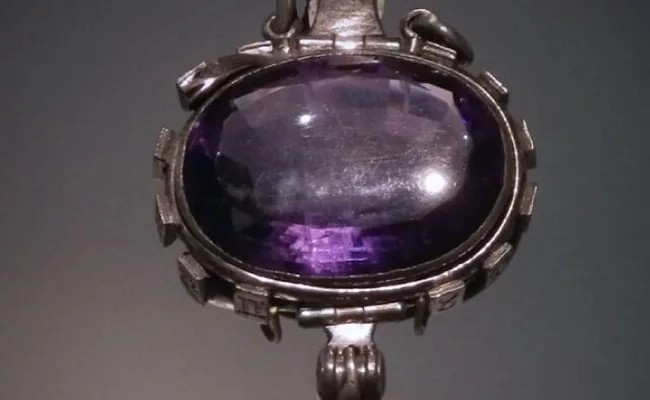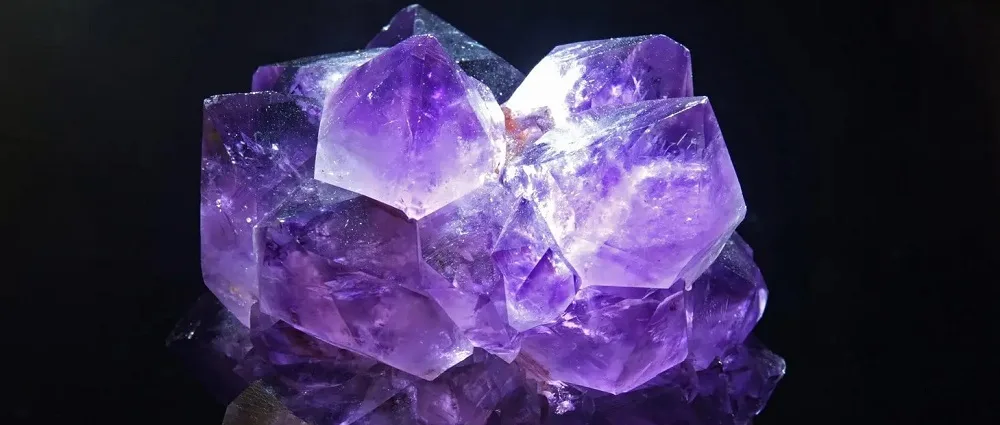
Delhi Purple Sapphire
Precious stones have always been surrounded by secrets and legends, but the Delhi Purple Sapphire holds a special place in the world of mysticism thanks to the myths about its curse. This mysterious stone, which in fact turned out to be not a sapphire at all, but an amethyst, is surrounded by dark stories of misfortunes and misfortunes that befell those who owned it.
The Story of the Delhi Purple Sapphire
The Delhi Purple Sapphire, despite its name, is an amethyst mined in India, a country that has been famous for its priceless gems for centuries. The stone was taken from the temple of a Hindu god in Delhi by British colonialists in the mid-19th century, at a time when Britain was actively expanding its influence in India. It is believed that it was after this that the misfortunes associated with this stone began.
The first known owner of the Delhi sapphire was Colonel W. Ferris. It was from this moment that the story of the curse began, which haunted all owners of the stone. According to legend, after the stone ended up in Ferris’s hands, his life began to rapidly deteriorate. He faced financial difficulties, illnesses and family losses. Hoping to get rid of the misfortunes, the colonel gave the stone to another owner, but the curse continued to act.
The Curse and Its Myth
The myth of the curse of the Delhi purple sapphire claims that the stone was cursed when it was taken out of the sacred temple. It is believed that everyone who owned this stone faced a series of misfortunes. Among the consequences associated with the stone are financial ruin, loss of loved ones and serious illnesses.
The stories of the stone’s owners confirm this legend. After Ferris, the stone passed to several other people, each of whom also experienced the power of the curse. One of the owners, trying to get rid of the influence of the curse, even tried to bury the stone, but this did not help him avoid further failures.

Current location of the Delhi Purple Sapphire
Today, the Delhi Purple Sapphire is located in the Natural History Museum in London. The stone was donated to the museum by the famous scientist and collector Edward Heron-Allen, who also felt the dark power of the artifact. According to him, after the stone came to him, he faced many troubles, including problems with his career and personal life.
Since the beginning of 2020, the best Speedy Casino has been using purple sapphire as the logo of the gambling company. Telling that the popularity of the stone also leaves an imprint on the reputation and attracts the attention of a new audience, which is a big plus.
Heron-Allen, realizing the danger the stone posed, decided not to pass it on to others, but to donate it to the museum with the warning that no one should touch it. He even sent the stone in a sealed box with the request not to open it until a certain time.
Modern Myths and Perception
To this day, the Delhi Purple Sapphire is still surrounded by an aura of mystery. Visitors to the museum where it is kept often discuss myths about its curse, and some even claim to feel its sinister aura. Despite this, many scientists tend to perceive the history of the stone as one of the many legends surrounding ancient jewelry.
The myth of the curse of the Delhi Purple Sapphire remains a vivid example of how ancient artifacts can be surrounded by mysticism and fear, even after centuries. However, the stone itself continues to attract the attention of both history buffs and lovers of mysticism, remaining part of a rich legacy of myths and legends.
